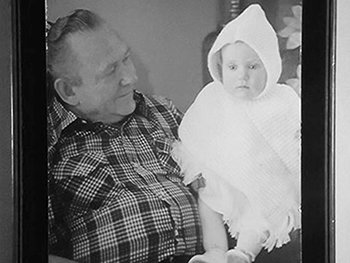New parents receive all sorts of advice about feeding their babies – from websites, social media, health care providers, family members, and even perfect strangers! I know it can be tiring and confusing.
When dealing with feeding advice, I find that it’s helpful to know that guidance has changed a lot over the decades. What might have made sense in our parents’ or grandparents’ time may no longer be a good fit today.
Learning from the past
Today, many parents plan to breastfeed their babies, especially in BC. But did you know this was not always the case? In the early 1900s, breastfeeding rates dropped. Malnutrition was common in babies who were fed with homemade cow milk formulas - a common problem at the time. This is why parents were told to add orange juice and cod liver oil to homemade formula, and why Pablum was created (and fed to very young babies, only weeks old!).
Today, we know more about the importance of breastfeeding and human milk, as well as when babies are ready for solid foods. We also know about the risks of homemade formula. For babies who need it, we can trust that store-bought infant formula will provide a range of nutrients. Yet, some of the old thinking about baby feeding still lingers. Allow me to clarify a few points:

There is no need to start solid foods early
Most babies shows signs of being ready for solid foods at about six months of age – some sooner, some later. Advice to feed infant cereal or other food to very young babies reflects a decades-old level of understanding and was meant for babies fed with homemade formulas, who were at risk of malnutrition.
There is no need for juice
Although orange juice was advised years ago to prevent scurvy in formula-fed babies, today this is no longer needed (since today’s store-bought formulas contain vitamin C). In fact, as per Canada’s food guide, fruit juice is now considered to be a “sugary drink,” and should be limited, if offered at all.
You don’t need to start with infant cereal or pureed foods
As described above, infant cereals were designed for very young babies who were too young for solid foods. I suspect that was likely the case with pureed foods, too.
Today, we encourage parents and caregivers to wait to offer solid foods until about six months, when babies show that they are ready. At this age, babies can start with a variety of food textures; there is no need for purees. Small, soft pieces of meat and mashed kidney beans are great first foods to try.
There is no need for special baby food
Store-bought baby foods can be handy, but they can be costly or contain added salt and sugar. On the other hand, I don’t see a need to freeze ice cube trays of homemade, pureed baby food either.
Instead, I find that folks are happy to learn that babies do well with cut-up or mashed family foods, which allows them to take part in family meals and learn from the people around them. This is how babies around the world have started solid foods, since long before commercial baby foods were created.
There is no “one way” to feed your baby
Some babies are keen to feed themselves, and can pick up, hold, and gum pieces of food when they start solid foods at about six months. Other babies may want that food in their mouths, but don’t yet have the skills or patience to do it on their own, and would love some help. Others may need more time before they are ready for solid foods. I let people know that they can offer finger foods or foods by spoon (or both) and can follow their baby’s lead.
Find your way
While feeding advice has changed a lot over the decades, I’m sure some things have stayed the same: starting solid foods can be a messy and exciting time!
It’s also a time when people have lots of questions. Learn more on our Nutrition in the first year webpage, and in these stories:














Comments